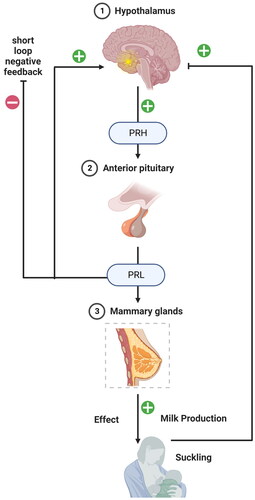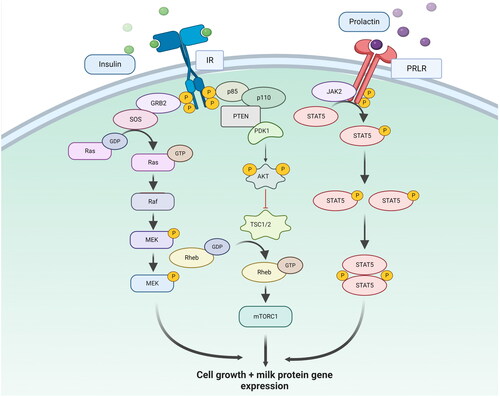Figures & data
Figure 1. The hypothalamus-anterior pituitary gland-mammary gland axis showing regulation of prolactin secretion and milk production. The prolactin-releasing hormone (PRH) from the hypothalamus signals the anterior pituitary for prolactin (PRL) secretion, which further binds to PRLR in MECs to signal the milk protein synthesis.

Figure 2. STAT5 and Ras signalling pathway regulating the expression of milk protein genes and cell growth. Prolactin binds to the prolactin receptor (PRLR) present on the cell surface of MECs and induces the STAT5 pathway for milk protein gene expression. The RAS signalling pathway is activated by growth factors and cytokines that bind to their receptors on the cell surface and activates a cascade of protein kinases, including the RAF-MEK-ERK pathway. The activated ERK protein kinase induces the transcription of target genes involved in cell proliferation, differentiation, and survival.

Data availability statement
The data that support the findings of this review article are available in PubMed Central [PMC] at [https://pubmed.ncbi.nlm.nih.gov/].
